
10+ Best anatomy apps in 2025
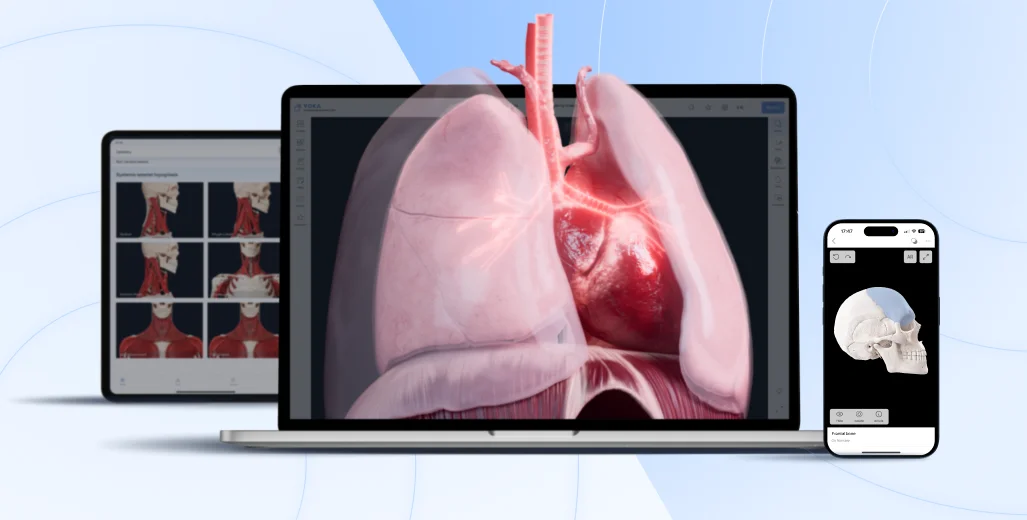
Table of contents
Every medical student has been there — staring at endless pages of anatomy terms and trying to memorize complex structures of the human body before an exam. That’s tough. But here’s the good news: learning anatomy doesn’t have to feel like this anymore.
Thanks to anatomy apps, you can explore the human body in a whole new way. These apps enhance anatomy learning and teaching with lifelike 3D models, AR experiences, quizzes and other interactive elements. But with so many options out there, how do you pick the best anatomy app? Don’t worry as we’ve done the research for you. Here are the best anatomy apps that will take your learning to the next level.
How we rank the apps
With so many anatomy apps available in 2025, finding the right one can be overwhelming. To help you navigate the market, we’ve carefully reviewed and selected the best ones based on key factors. Here’s what we looked at:
User interface and experience
The best anatomy apps go beyond just providing detailed anatomical information. They make learning intuitive and visually engaging. We selected the apps that are easy to navigate, ensuring a smooth experience for both beginners and advanced users.
Anatomical accuracy
We chose apps that offer anatomically accurate 3D models, precise labeling, and medically reliable content. From muscle layers to organ systems and pathology, these tools reflect current clinical standards and help you build a trustworthy foundation for safe patient care.
Interactive features
Interactivity is a core component of effective learning in digital resources. We looked for apps that offer a range of interactive features such as 3D anatomy models that can be rotated, zoomed, and dissected. Other features we considered include quizzes, augmented reality (AR) experiences, and tools that allow users to customize their learning experience by annotating 3D visualizations or creating custom experiences.
Compatibility
An essential aspect of our evaluation was how compatible these apps are across various devices and platforms. We considered how easily the apps can be used across different devices, including mobile, web, and desktop options.
Pricing
Affordability can be a decisive factor for many users, especially students who need high-quality resources without breaking the bank. We analyzed the pricing, considering the cost and the value offered at each price point. Free features, subscription models, and one-time purchase options were all taken into account to understand which apps provide the best value for money.
Ratings
User feedback is also essential when choosing the best anatomy apps. We analyzed ratings and review counts from Google Play and the App Store to see how real users feel about each app. By considering user feedback, we ensure that the recommended apps aren’t just impressive on paper but also practical and widely approved.
Top anatomy apps in 2025
If you're short on time and don’t want to scroll through detailed reviews, this quick comparison table gives you a snapshot of the 13 best anatomy apps in 2025.
1. VOKA 3D Anatomy & Pathology
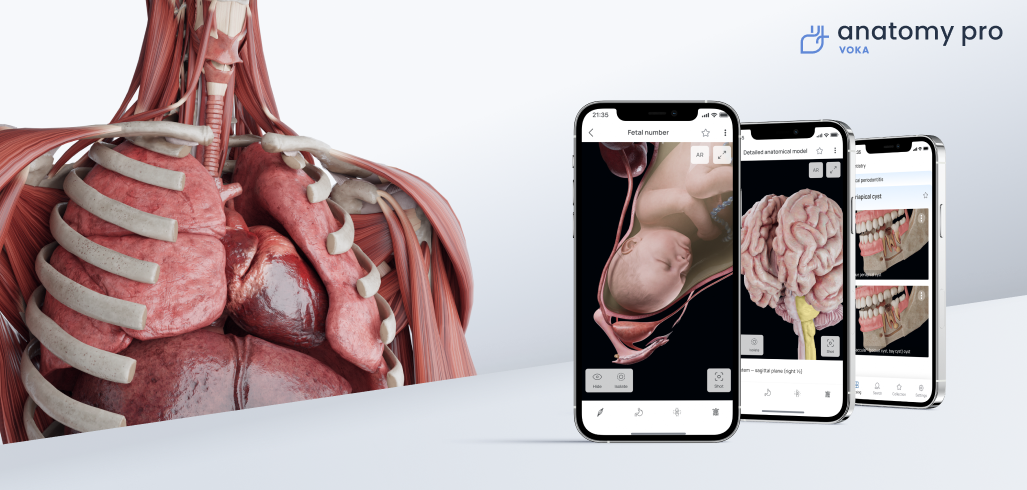
VOKA 3D Anatomy & Pathology is the first-ever 3D atlas that integrates normal anatomy and microanatomy with gross pathology. Designed with input from top medical experts, this app provides a realistic, interactive learning experience for medical professionals, students, and educators. Available on both mobile and web, it makes studying anatomy and pathology more accessible than ever.
The app features a wide collection of 3D models covering anatomy, pathology, microanatomy, and physiology. Users can explore both male and female anatomy with unmatched clarity and depth by zooming, rotating, and examining structures from any angle. You can also virtually dissect models to see how different layers and systems connect while features like isolate, fade, and hide let you focus on specific structures without distractions.
Plus, with its AR mode, VOKA empowers users to place 3D models in their real environment, making the study experience even more immersive and engaging.
Pros
Cons
Compatibility
Pricing
Reviews
Check it out: https://catalog.voka.io
2. Human Anatomy Atlas 2026
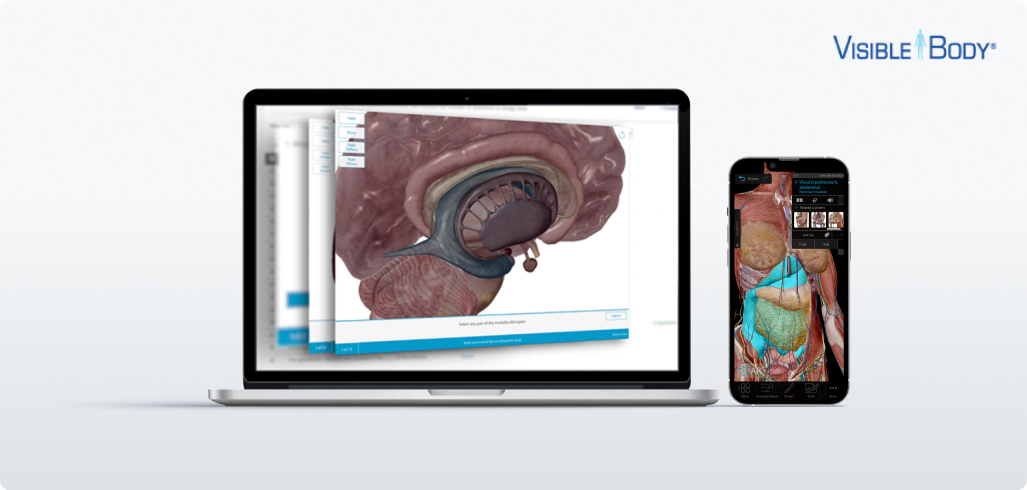
This app offers interactive 3D models of both male and female anatomy and serves as an invaluable resource for students, educators, and healthcare professionals alike. Beyond 3D visualization, the app enriches learning with a video library tailored for patient education, enhancing understanding and communication. Additionally, it features a specialized 3D Dental Anatomy model, making it a standout resource for dental students and professionals seeking to deepen their anatomical knowledge.
Pros
Cons
Compatibility
Pricing
Reviews
3. TeachMeAnatomy
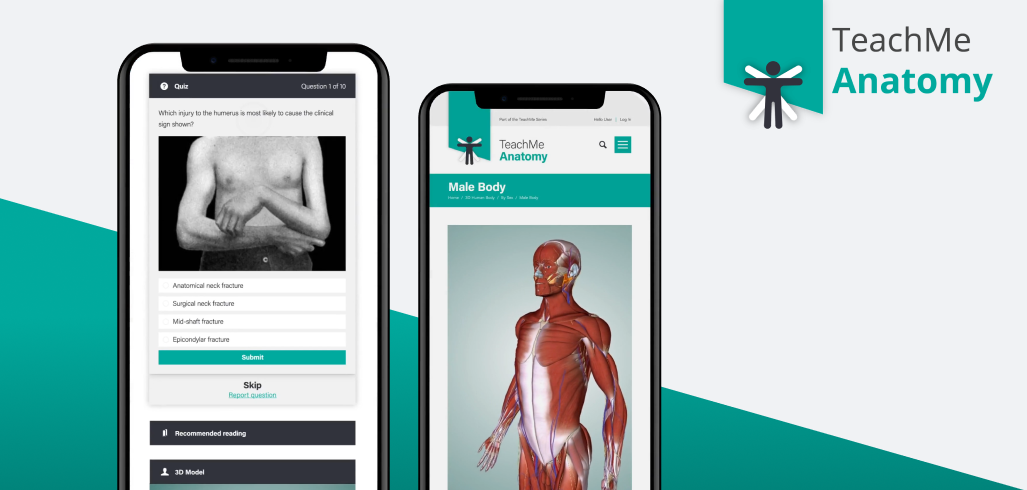
TeachMeAnatomy presents a comprehensive anatomy learning platform specifically designed for healthcare professionals and medical students. This app provides a wealth of resources to enrich your study and practice of anatomy. Users can access an extensive question bank that challenges and tests their knowledge, along with high-definition illustrations and detailed 3D anatomy models that bring anatomical structures to life. The app also features a wide array of informative articles and a concise encyclopedia, making it an all-encompassing tool for both quick reference and deep dives into the complexities of human anatomy.
Pros
Cons
Compatibility
Pricing
Reviews
4. Anatomy Learning - 3D Anatomy
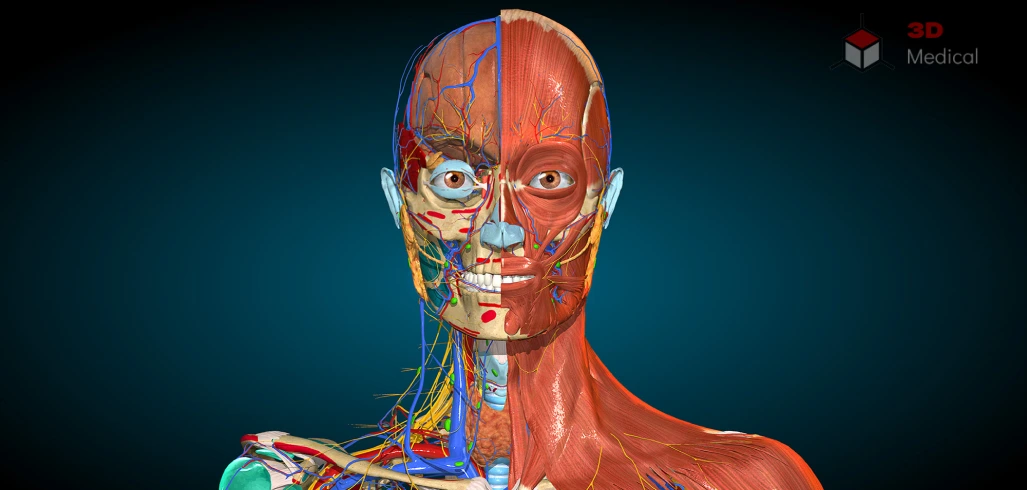
Anatomy Learning - 3D Anatomy elevates the study of human anatomy with its highly interactive 3D anatomy models of both male and female bodies. This app features real-time exploration capabilities that allow users to navigate through over 6,000 detailed anatomical structures. Beyond visual exploration, the app offers more than 500 animations illustrating muscle movements, providing dynamic insights into the functional mechanics of the human body. Additionally, it includes 1,000 quizzes designed to test and enhance memory retention.
Pros
Cons
Compatibility
Pricing
Reviews
5. Anatomyka
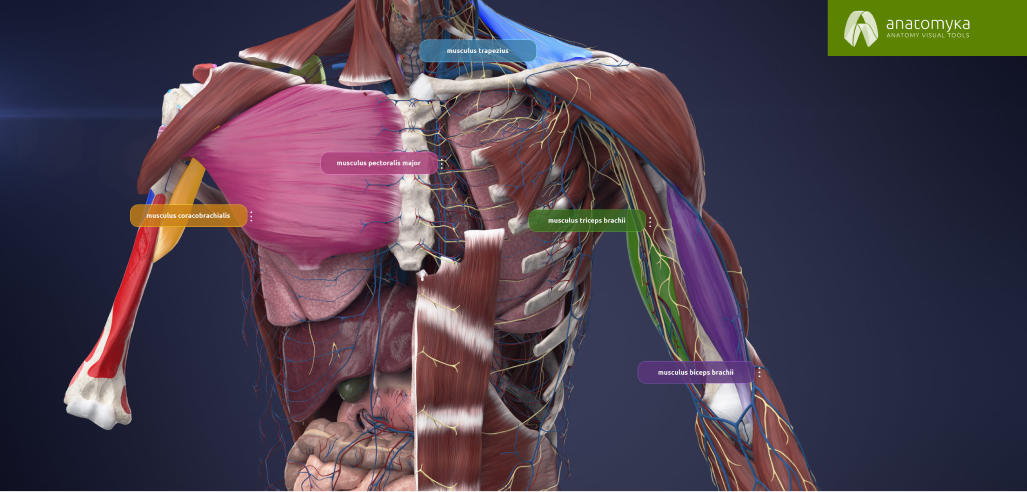
Anatomyka offers an in-depth exploration of over 13,000 anatomical structures, complemented by 500 pages of detailed medical descriptions. Each system, organ, and part within the app provides users with extensive information on structure, hierarchy, and regions. Clinical notes enhance the learning experience by offering insights into practical applications, while additional details on related organs, including vascular supply and innervation, complete a thorough educational tool.
Pros
Cons
Compatibility
Pricing
Reviews
6. BioDigital Human
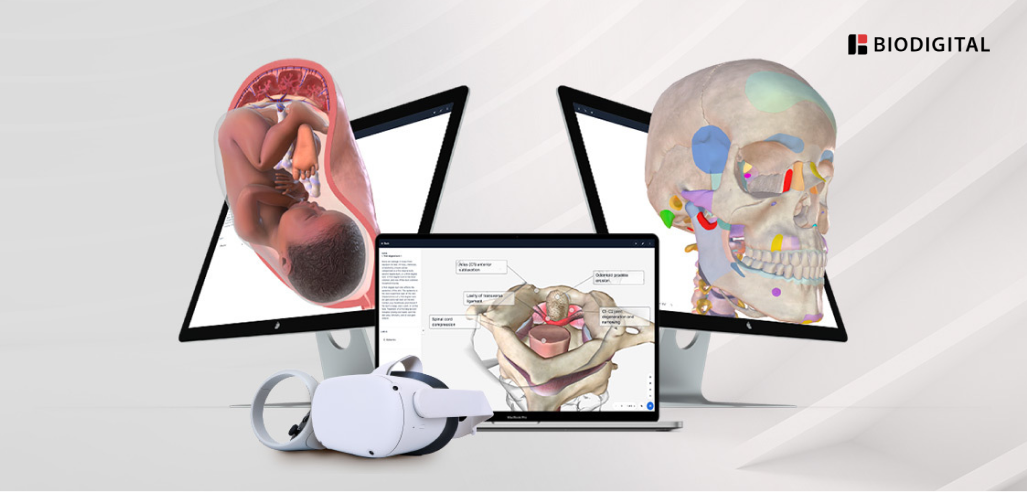
BioDigital Human brings a revolutionary approach to visualizing human anatomy with its advanced 3D system, designed to assist practitioners in disease identification and treatment planning. This application offers detailed 3D anatomy models of both male and female bodies, facilitating a deeper understanding of complex bodily structures. Users can explore over 20 regional and system-based anatomy models, which are perfect for in-depth studies across various medical specialties. Moreover, the app includes more than 700 interactive health condition models, making it an invaluable resource for simulating diseases and visualizing their impacts on the human body.
Pros
Cons
Compatibility
Pricing
Reviews
7. Complete Anatomy
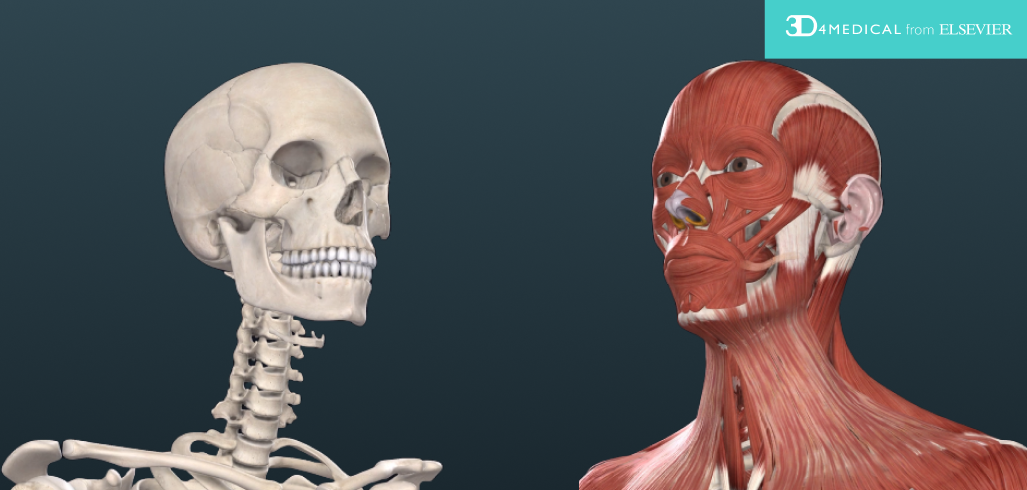
Complete Anatomy stands at the forefront of digital anatomy learning, inspired by the renowned Gray's Anatomy atlas. This cutting-edge 3D learning platform offers users an immersive exploration of detailed 3D anatomy models of both male and female bodies. Ideal for students and professionals alike, the app facilitates a deeper understanding of the human body through the ability to simulate cadaveric dissections. Users can interact with individual anatomical structures, enhancing their learning experience by observing the intricate details and spatial relationships within the body.
Pros
Cons
Compatibility
Pricing
Reviews
8. e-Anatomy
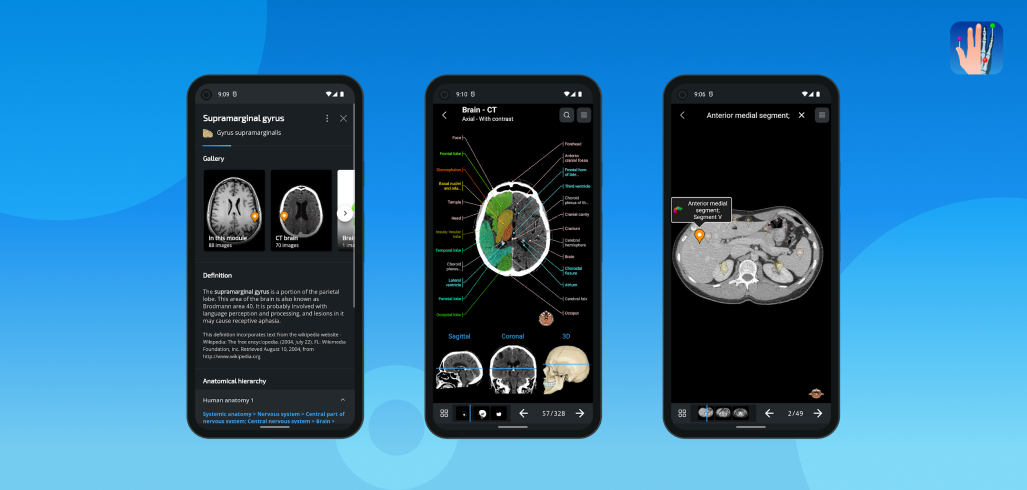
IMAIOS e-Anatomy, a comprehensive digital atlas, is tailored for physicians, radiologists, medical students, and radiology technicians. This mobile and tablet application offers labeled medical and anatomical images, including axial, coronal, and sagittal views, as well as radiography, angiography, and dissection pictures. Initially accessible through a free preview, the app invites users to subscribe for full access. It features a robust labeling system in 12 languages, including Latin, making it a versatile and invaluable resource for in-depth anatomy studies on the go.
Pros
Cons
Compatibility
Pricing
Reviews
9. Daily Anatomy Flashcards
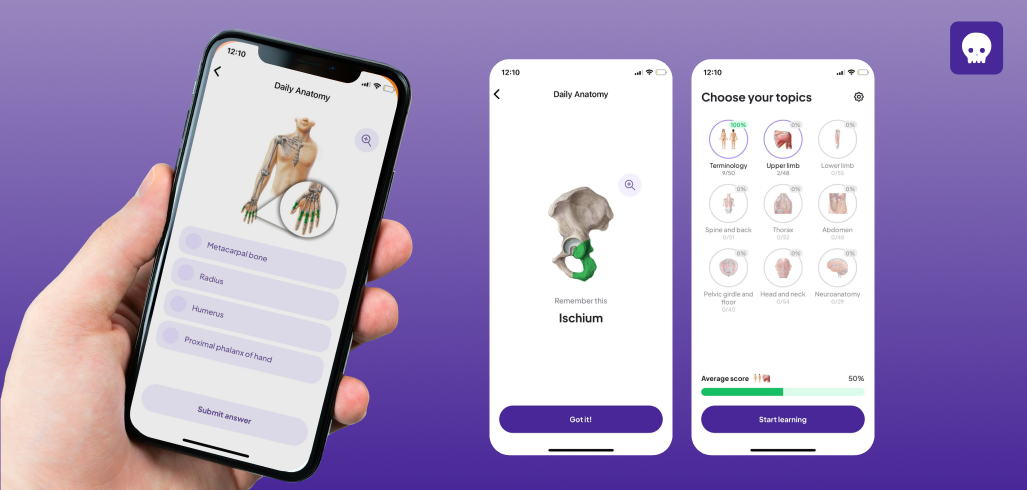
Daily Anatomy Flashcards introduces the 500 most crucial anatomical structures in a format that's accessible even to beginners, making it an ideal starting point for delving into the world of anatomy. With no prior knowledge required, Daily Anatomy begins with the basics and progressively challenges the user, enhancing retention and understanding over time. It employs varied teaching methods beyond simple repetition, such as presenting information in different formats and using problem-solving techniques that help cement knowledge for long-term retention. The app is particularly effective due to its use of spaced repetition—a proven educational technique that involves increasing intervals of time between review sessions to embed information more durably in memory.
Pros
Cons
Compatibility
Pricing
Reviews
10. Visual Anatomy Lite
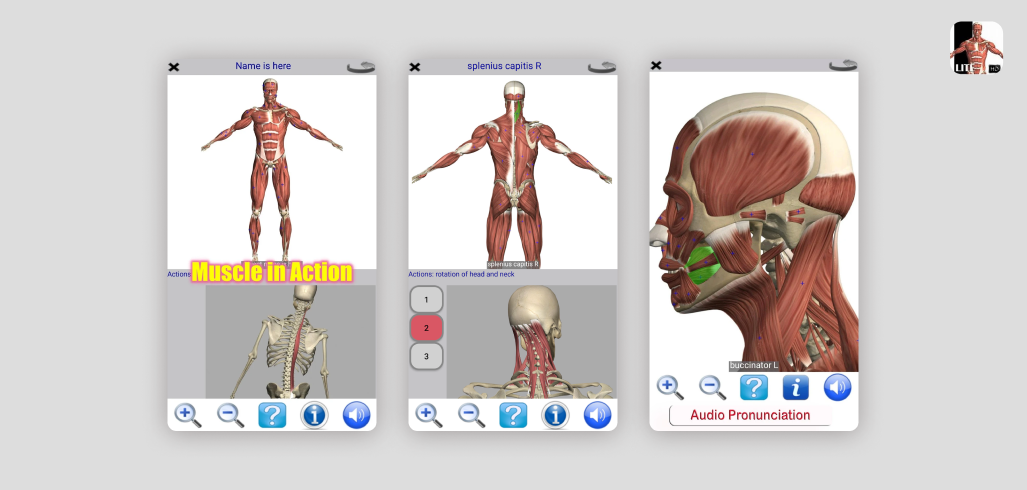
Visual Anatomy Lite offers 3D visualizations and engaging 3D animations that bring anatomy to life. With comprehensive coverage of all body systems, Visual Anatomy Lite includes more than 500 interactively selectable feature points, each with its own labeled description and audio pronunciation. The app enhances learning efficiency through a search function, allowing users to quickly find labels and descriptions of all feature points. Additionally, it features eight overview images from the classic Gray’s Anatomy text, with the full version offering all 1,247 images. The inclusion of a quiz with 23 multiple-choice questions makes it a great tool for testing knowledge and preparing for exams.
Pros
Cons
Compatibility
Pricing
Reviews
11. Essential Anatomy 5
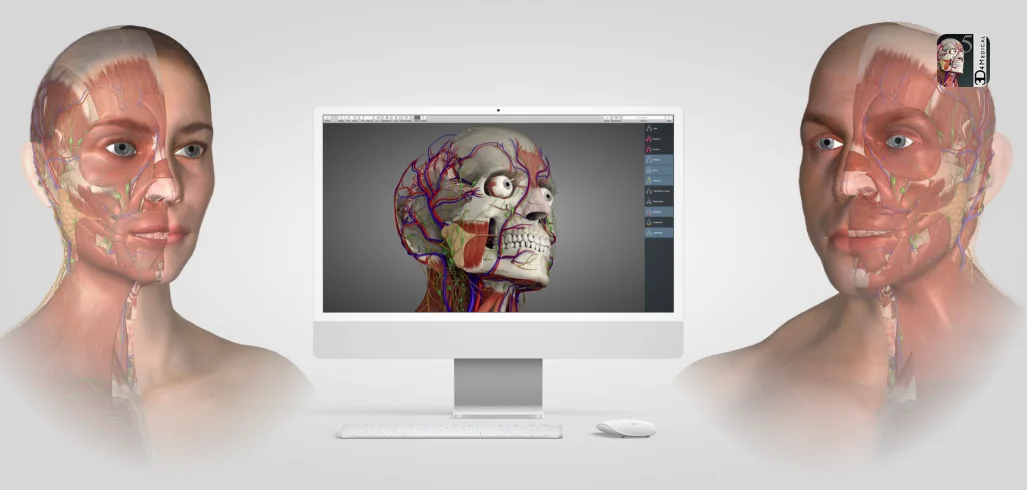
Essential Anatomy 5 is a widely trusted anatomy app known for its highly detailed 3D models and intuitive interface. This app provides one of the most extensive human anatomy libraries, covering over 8,200 structures across all body systems. It’s particularly popular among medical students and professionals due to its clean design and realistic visuals. The app also includes labels, definitions, and quizzes, making it an excellent study companion.
Pros
Cons
Compatibility
Pricing
Reviews
12. Anatomy 3D Atlas
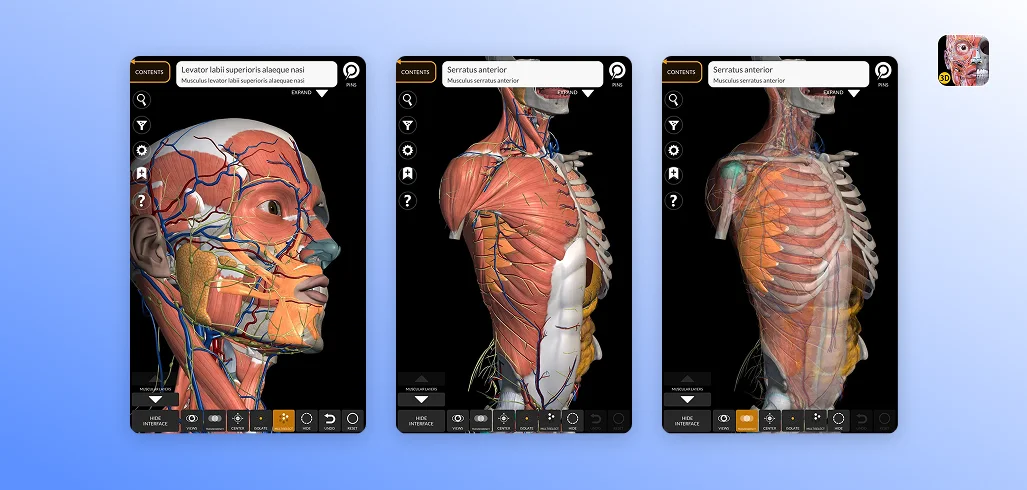
Anatomy 3D Atlas is an intuitive app designed to help students, educators, and healthcare professionals explore highly detailed 3D models of the human body. Covering all major anatomical systems, it allows users to interactively study muscles, bones, organs, and more through realistic visuals and easy-to-use controls. With high-resolution textures and precise anatomical details, users can zoom, rotate, and isolate structures for a deeper understanding. The app is perfect for medical students, physiotherapists, and anatomy enthusiasts looking for an accessible yet comprehensive learning tool.
Pros
Cons
Compatibility
Pricing
Reviews
13. Easy Anatomy 3D

Easy Anatomy 3D is a powerful app designed to make studying anatomy simpler, faster, and more engaging. Featuring a highly accurate 3D model of the human body, this app offers layer-by-layer exploration of every anatomical system, allowing users to study structures in incredible detail. Beyond just 3D models, Easy Anatomy 3D includes high-quality videos, study notes, and flashcards, making it an all-in-one resource for mastering anatomy. Complex concepts are broken down with clear explanations, diagrams, mind maps, and clinical notes, helping students and professionals retain information more effectively.
Pros
Cons
Compatibility
Pricing
Reviews
Why use anatomy apps?
The human body is three-dimensional. So why settle for static images and dense textbooks when you can study anatomy in 3D? Anatomy apps make learning faster, easier, and way more memorable by letting you interact with organs, muscles, and bones in a hands-on way. This is something traditional methods simply can’t match.
Here’s why anatomy apps change the game:
Interactive experiences: Instead of memorizing flat diagrams, you can rotate, zoom, and manipulate virtual organs and structures to see them from every angle.
Personalized learning: You can customize your study sessions to focus on specific body systems or structures, and learn at a preferred pace.
Anytime, anywhere access: Anatomy apps are like an entire anatomy lab in your pocket – you can study at home, in class, or on the go.
Enhanced retention: Studies show that interactive learning improves memory and comprehension, making complex anatomical concepts easier to grasp and retain.
Future trends in anatomy apps
As technology advances, anatomy learning is becoming more immersive, intelligent, and collaborative than ever before. Here's a closer look at what the near future holds for anatomy apps:
Augmented & Virtual Reality (AR/VR): One of the most exciting trends is the deeper integration of AR and VR technologies. These tools will allow users to step inside the human body, interact with fully immersive 3D models, and even simulate surgical procedures. Whether it’s through augmented layers of muscle and bone viewed in your living room or full virtual dissection tables in medical training, AR/VR will redefine how we visualize and engage with human anatomy.
AI-powered personalization: Artificial intelligence is poised to make anatomy apps smarter and more responsive. Future apps will use AI algorithms to track user behavior, quiz performance, and learning patterns. Based on this data, the apps will deliver personalized study plans, recommend targeted practice areas, and adapt content difficulty in real time.
Global collaboration & cloud-based learning: Another powerful trend is the rise of cloud-based platforms that support real-time global collaboration. Anatomy apps of the future will function like virtual anatomy labs, where students, educators, and professionals from around the world can interact. They’ll be able to work on shared 3D models, leave annotations, discuss case studies, and learn together — all in a synchronized, virtual space. This shift breaks down geographical barriers in medical education.
Wrapping up on top anatomy apps
Anatomy apps have streamlined how we learn about the human body, shifting us from flipping through static textbook images to interactive, hands-on experiences. Whether looking for detailed 3D models or smart study tools like quizzes, there’s an app for all tastes and needs. And with technology evolving fast, this is just the beginning. Ready to explore the human body in an interactive and engaging way? Pick your app and start your anatomy journey today!
FAQ
1. What are the best free anatomy apps?
Some of the best anatomy apps with free versions include VOKA 3D Anatomy & Pathology, Complete Anatomy, and Visual Anatomy Lite, among others. These apps are great tools to learn anatomy, especially for students and healthcare professionals on a budget.
2. What are the key benefits of using anatomy apps over traditional textbooks?
Anatomy apps provide an interactive, hands-on learning experience that textbooks can’t match. You can rotate 3D models, zoom in on structures, test yourself with quizzes, and more. The best anatomy apps for medical students also include expert content like articles and labels.
3. Are these anatomy apps suitable for both beginners and advanced learners?
Yes, whether you're a beginner or an advanced medical student, the best anatomy learning apps allow users to tailor their learning experience based on their level.
4. Can I use these apps offline?
Some of the best anatomy apps offer offline access for downloaded content.
5. Do these apps support multiple languages?
Yes, many of the best human anatomy apps support multiple languages. VOKA 3D Anatomy & Pathology, for instance, offers translations for English, German, and Russian, making it accessible to international users and non-English speakers.
6. Can I use these apps for patient education?
Absolutely. With clear visuals and simplified explanations, these tools help patients better understand diagnoses, procedures, or anatomy-related questions.
7. Are institutional or group licenses available?
Yes, many of the best anatomy apps offer institutional or classroom licenses. Apps like VOKA 3D Anatomy & Pathology and BioDigital Human have licensing plans for schools or hospitals, perfect for group learning and curriculum integration.
8. How often are the apps updated?
Leading anatomy learning apps are updated regularly to ensure accurate content and improved features. They receive updates with new models, animations, and interface improvements several times a year, keeping them among the best 3D anatomy apps available.
Table of contents
Thank you for your comment!
Your comment has been submitted for moderation and will be published soon. We'll email you once it’s live.